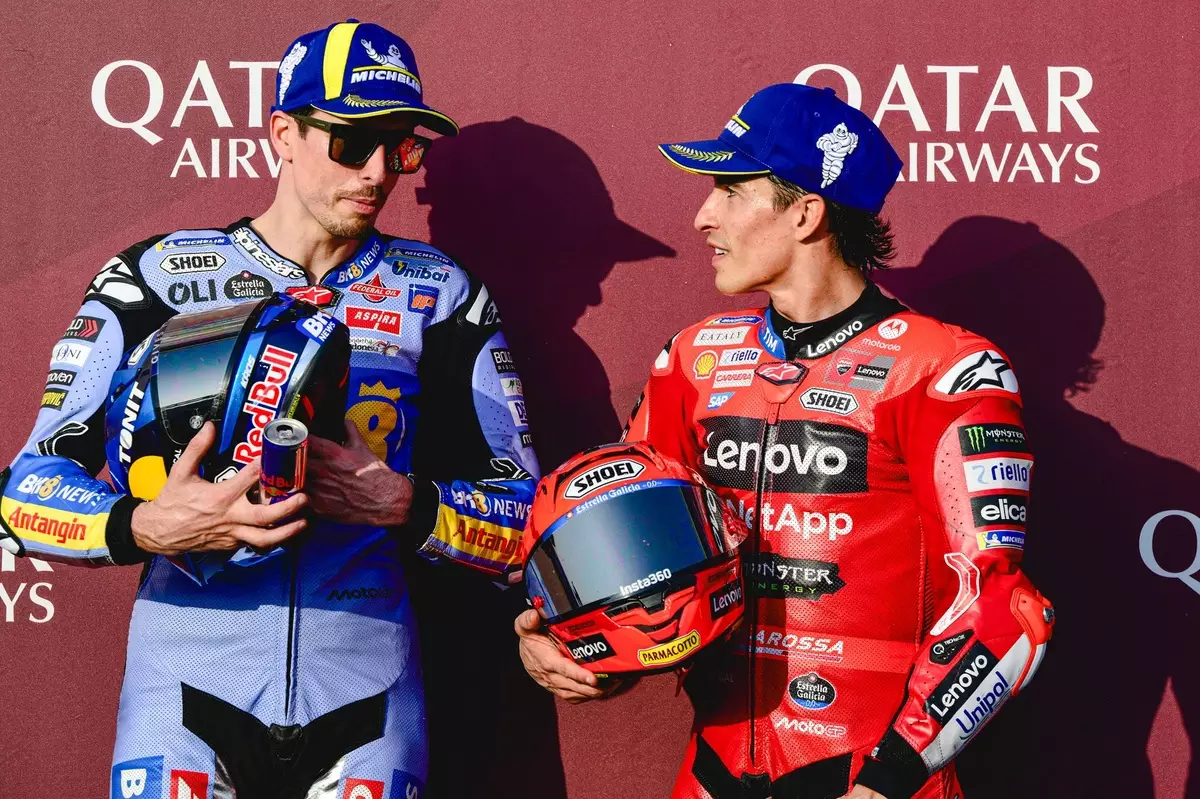The Qatar Grand Prix showcased the intense rivalries and relationships that are common in the high-stakes world of MotoGP, particularly during an event where the Marquez brothers, Marc and Alex, found their competitive spirits colliding on the track. Enthusiasts of the sport anticipated a thrilling competition, especially considering Marc’s position as poleman and Alex’s recognition as a rising star. However, the opening moments of the race revealed the razor-thin margins that exist in motorcycle racing, where one moment of miscalculation can send ripples of chaos through competitors’ plans.
As they approached the first corner, Marc Marquez surged forward to claim the lead, a move that he executed with characteristic precision. Yet, what followed was a moment characterized by both a lapse in judgment and an unexpected loss of speed. Marc inadvertently cut across Alex’s path, resulting in light contact and cosmetic damage to both of their bikes. This incident not only altered their positions but also set the tone for an emotionally charged race, where brotherly rivalry and competitive spirit danced dangerously close to the edge of conflict.
A Ripple Effect on Performance
For both Marc and Alex, the consequences of that initial clash proved pivotal. While Marc appeared unfazed, swiftly rallying back to secure victory, the same could not be said for Alex. The contact threw him off his rhythm, allowing Franco Morbidelli, unencumbered by the disruption, to dart past both brothers and seize an early lead — a golden opportunity that underscored the unpredictable nature of racing dynamics.
In competitive motorsport, momentum is not merely an abstract concept; it is fundamental. For Alex, the collision destabilized his race strategy and prompted a desperate attempt to reclaim lost ground. Unfortunately, this eagerness to recover would soon lead to a miscalculated overtaking attempt on Fabio di Giannantonio that resulted in yet another collision, this time earning Alex a long-lap penalty. What began as a promising race quickly devolved into frustration, leaving him to settle for seventh place.
Ownership of Mistakes: A Learning Curve
Post-race reflections from the Marquez brothers revealed a maturity oftentimes not seen in the immediacy of competition. Marc readily accepted responsibility for the first-corner incident, showcasing an admirable level of introspection that is not always a hallmark of elite athletes. “The contact with Alex was a little bit more my mistake,” he candidly stated, understanding the camouflaged impact of tactical decision-making in high-pressure situations. This admission highlights an important aspect of leadership and accountability, particularly for those in competitive environments.
Conversely, Alex mirrored this sentiment by acknowledging his misstep in the second instance of misjudgment with Di Giannantonio. In racing, the acceptance of blame can be a humbling experience, carving a path for personal growth. “It was my mistake, it’s my responsibility,” he remarked, revealing a deeper understanding not just of the race but of life lessons that extend beyond the track.
Emotional Turbulence and Future Aspirations
For Di Giannantonio, the frustration of being caught up in the fray while racing at the highest level was palpable. His reflections on the incident indicate the pressure that MotoGP riders face; the stakes are high, and the margin for error is slim. Conflicting emotions arise when acknowledging the human elements of racing, where a split-second decision can alter the equations of performance and safety.
Moving forward, both Marquez brothers and Di Giannantonio will be faced with the dual challenges of mitigating risk while retaining their racing instincts. The intricacies of their craft demand not only technical mastery but emotional resilience. As the season progresses, the events of the Qatar Grand Prix can serve as invaluable lessons — lessons in responsibility, the nature of competition, and the importance of learning from moments of adversity. Each rider must navigate their journey while racing towards success, where every lap teaches the critical balance of precision and humility.

